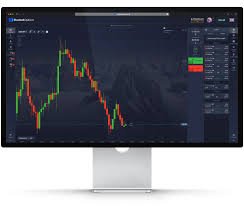
Effective Trading Strategy with Envelope for Maximizing Profits
In the world of trading, having an effective strategy is crucial for success. This article explores a comprehensive Trading Strategy with Envelope торговая стратегия с Envelope that can help traders enhance their performance by combining technical analysis with practical trading tactics. The Envelope indicator, designed to adapt to market conditions, provides valuable insights into potential price movements. Let’s delve deeper into how to implement and optimize this strategy.
Understanding the Envelope Indicator
The Envelope indicator consists of two lines plotted above and below a moving average. These lines represent a certain percentage of deviation from the average price, creating a channel that contains the price movements. The primary use of the Envelope indicator is to identify overbought and oversold conditions, which can signal potential entry and exit points for traders.
The basic formula for calculating the Envelope lines is as follows:
– Upper Envelope = Moving Average + (Percentage Deviation * Moving Average)
– Lower Envelope = Moving Average – (Percentage Deviation * Moving Average)
Traders typically use simple or exponential moving averages based on their trading preference. Selecting a suitable percentage deviation is also crucial, as it determines how tightly or loosely the envelopes follow the price action.
The Trading Strategy with Envelope
Here’s a step-by-step guide to implementing the Envelope trading strategy:
Step 1: Setting Up the Indicator

Start by applying the Envelope indicator to your trading chart. Select a moving average period that aligns with your trading style—short-term traders might opt for 10 to 20 periods, while long-term traders may choose 50 to 100 periods. Adjust the percentage deviation (commonly between 1% – 3%) based on your preferred level of volatility.
Step 2: Identifying Trade Signals
The Envelope strategy generates two primary signals:
– **Buy Signal:** When the price touches or crosses the lower envelope line, it suggests that the asset may be oversold. This is a potential buy signal as the price might reverse.
– **Sell Signal:** Conversely, when the price touches or crosses the upper envelope line, it indicates that the asset is overbought. This is typically a sell signal, as a price correction is likely.
Step 3: Confirming Signals with Additional Indicators
To enhance the accuracy of your trades, consider combining the Envelope indicator with other technical indicators. Common choices include:
– **Relative Strength Index (RSI):** Use this momentum oscillator to confirm overbought and oversold conditions. An RSI above 70 often confirms overbought signals, while an RSI below 30 supports oversold conditions.
– **Moving Average Convergence Divergence (MACD):** This trend-following momentum indicator can help confirm entry and exit points based on crossover signals.
– **Bollinger Bands:** These bands can complement the Envelope strategy by providing additional insight into price volatility and reversal points.
By validating your signals with these additional indicators, you can increase the probability of successful trades.
Step 4: Managing Risk

Risk management is a critical aspect of any trading strategy. Here are some key points to consider:
– **Stop-Loss Orders:** Establish a stop-loss order slightly below the lower Envelope line for buy trades and slightly above the upper Envelope line for sell trades. This helps limit potential losses.
– **Position Sizing:** Determine your position size based on your risk tolerance and account balance. Never risk more than a small percentage of your capital on a single trade.
– **Take-Profit Levels:** Set clear take-profit levels to secure profits. Consider previous support and resistance levels or use a risk-reward ratio of at least 1:2.
Backtesting and Optimization
Before deploying the Envelope trading strategy in a live trading environment, it’s essential to backtest it on historical data. This process allows you to assess its effectiveness across different market conditions and optimize the parameters to suit your trading style.
Many trading platforms offer backtesting features that allow you to simulate trades based on historical price movements. This can provide valuable insights into the profitability and reliability of your strategy.
Common Mistakes to Avoid
While implementing the Envelope trading strategy, traders should be mindful of several common pitfalls:
– **Ignoring Market Conditions:** The effectiveness of the Envelope strategy can vary based on market conditions. Avoid using this strategy in highly volatile or trending markets without additional confirmation.
– **Overtrading:** Stick to your trading plan and avoid entering trades impulsively. Wait for clear signals and confirmation before acting.
– **Neglecting Risk Management:** Always prioritize managing risks. Even the best strategies can lead to losses if risk management measures are not in place.
Conclusion
The Envelope trading strategy offers traders a systematic approach to identify potential entry and exit points based on price deviations from a moving average. By combining this strategy with proper risk management and additional technical indicators, traders can enhance their trading performance. Remember to backtest, optimize, and stay disciplined in your trading practices to maximize your chances of success.
In conclusion, while the Envelope indicator provides valuable signals, it should not be the sole factor in making trading decisions. By maintaining a comprehensive approach that includes market analysis, risk management, and continuous learning, traders can navigate the complexities of the financial markets more effectively.
